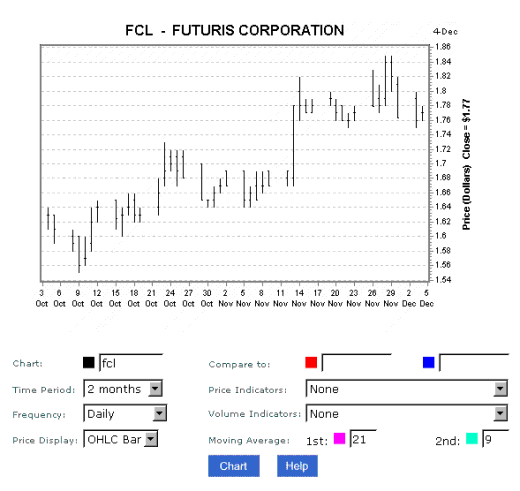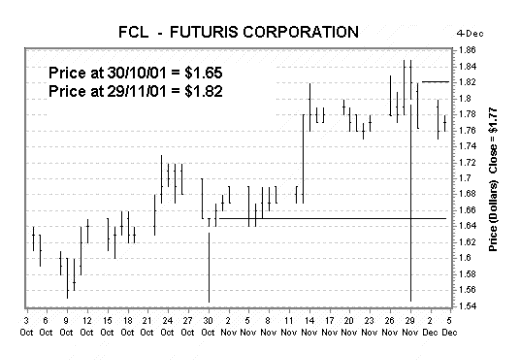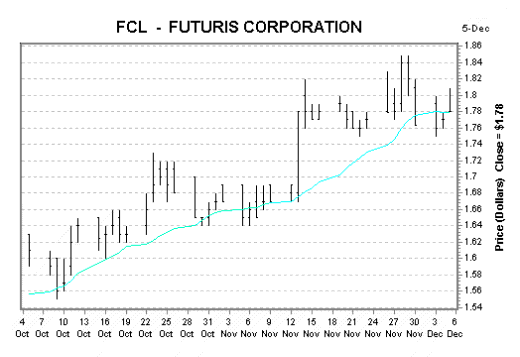- Active Investing - what is it?
- All Weather Trading Plan using Complex Theory (Parts 1 - 4)
- Asset Management (Parts 1 - 4)
- Back Testing
- Breaking out from consolidation
- Breakout trading in all market conditions
- Charting in a Nutshell
- Children of the Bear
- Fibonacci and the Golden Ratio
- Going Public
- Hull Moving Average
- MACD Breakout Trading (Parts 1 - 2)
- Making decisions with a Simple Moving Average
- Probability: do you have the stomach for it?
- Profit Taking
- Relative Strength
- Record Keeping
- Risky Business
- Short Selling
- Social Media Bubble
- Switching Gears
- Rate of Return indicator
- Time and Money
- Tools of the Trade
- Trade Warrants (Parts 1 - 4)
- Trading without spending money
- Trendlines
- Triangles
- GMMA's on Weekly Charts
- Writing Custom Indicators
Articles include:
I am often asked by newcomers to the Stockmarket, what software and other 'tools of the trade' do, they need to begin trading shares. The reality is that you don't need any special software or equipment, except access to the Internet. I will qualify this claim by also stating that having charting software of your own will make the job a lot easier and quicker, but it is not essential. I could trade shares using only the information and charts available to me on the Internet. Although I have made this claim on many occasions I didn't think it would ever get put to the test. After all... who would be silly enough to try it?
The answer to that question is Secondary school students and it's not because they're silly but because they don't have access to the same resources that we do as adult individuals. The ASX recently asked me to give a brief presentation to a group of Secondary School Math's Teachers at the annual Math's Symposium held at Monash University. The purpose of my talk was to show the teachers how to trade shares so that they, in turn, could teach their students.
-
My brief was as follows:
- Show a group of math's teachers how to profitably trade the S&P/ASX200 Index shares in the ASX online trading competition for Secondary Schools. (Duration - 2 Months)
- Their only resource - The Internet
- The time in which I have to teach the Teachers - 50 minutes.
My answer - Yeah, no drama My first thought - WHAT A DRAMA !!!
In essence my task was an easy one... all I have to do is explain to a room full of math's teachers that the Trend is their friend. It's the practical implementation of this concept that would prove difficult and the rest of this article is the solution that I proposed to the teachers.
Problem 1
Where do I find the complete list of shares that make up the S&P/ASX200 Index?Answer - S&P Dow Jones Indices
A complete Microsoft Excel spreadsheet can be downloaded from the Standard and Poor's Global website for every S&P Index. The spreadsheet includes company names, share codes and industrial sectors.
Problem 2
Where can I find daily price charts for each of these shares? I need daily charts because the duration of the ASX competition is only 2 months. Therefore we need to perform analysis on a daily basis and fundamentals won't come into the equation as they have little to no effect on price movements over this 60 day timeframe.1 possible answer - http://www.egoli.com.au
Anyone can obtain both daily and weekly charts for any share listed on the ASX from Egoli. The functionality available for charting on this website is the best I have seen for the price, which is nothing. You have a wide choice of time-scales, graph types and overlay functions such as two simple moving averages, etc. The following chart is from the Egoli website.

We have solved all of our preliminary problems and we now have a basic set of trading tools that have cost us nothing. Now we need to turn our attention to our strategy, which is based on the tried and true approach of Trend Trading.
Measuring the Trend
We now have to identify upward trending shares and then manually measure their rate of ascent for the purpose of comparison. Overcrowding in school classrooms may prove to be an advantage when it comes to manually analysing price trends. We now have to put each of our 200 shares under the microscope and sift out the ones that meet the following criteria.- Price activity must be steadily trending upwards, where steadily is the operative word.
- We want only those shares that are trending up at the highest possible rate of return.
I have an admission to make at this point... I cheated and used the ChartScanner function in Supercharts. But my excuse is that I don't need the practice. However, the following chart and calculations will give you some idea of what the students need to do in the case of each share.

Having read the prices off the chart the students must then compute the annual rate of return.
- The change in price over 1 month is 1.82 - 1.65 = 0.17
- The monthly rate of return expressed as a percentage is 0.17 / 1.77 x 100 = 9.6%
- Converting to an annual figure we get 9.6% x 12 = 115% p.a.
Once this exercise has been completed for the entire list of shares we can then compare apples with apples and pick out the most profitable opportunities.
Risk Management
It may seem a bit strange to be looking at risk management when all we are doing is trying to win a trading competition. After all, there's no money on the table anyway. Why don't we just put all our pretend money on the best trend and hope that it doesn't falter? What's more, if it does falter we can just move all of our play money to the next best trend. But even in this instance we can employ risk management and diversification to gain an advantage.-
Imagine that the 5 best trends are as follows:
- ABC is rising at 215% per annum
- ZEN is rising at 203% per annum
- BIG is rising at 210% per annum
- NAK is rising at 209% per annum
- XYZ is rising at 153% per annum
If we apply the, All of our eggs in one basket approach then we will only own ABC, which is running up at 215% per annum. But if it falters badly and drops 20% before we sell it then we will lose 20% of our total play money.
But if we spread our money evenly across ABC, ZEN, BIG and NAK then we will still achieve an average return of 209% and a 20% fall in the price of any individual share will be diluted down to only 5% of our total play money.
However we will not diversify to the point where we are willing to accept a share with a rate of return of 153%, as is the case with XYZ. If we were to do so we would be dramatically reducing our rewards to achieve a relatively small reduction in risk. Diversification doesn't have to mean a directly proportional loss in reward with respect to reduction in risk.
1 share = 215% return + 20% risk | 4 shares = 209% return + 5% risk
We will diversify our holdings to reduce risk, providing it doesn't have a substantially negative impact on our rewards.
When to buy and sell
Once we've chosen our small portfolio of upwardly mobile shares we are faced with the dilemma of when to buy into the market and when to sell. To solve this problem we can employ the use of a simple moving average. By placing a single line over the price activity, as shown in the chart below, we have defined our tolerance towards falling share prices.
The line in the above chart is a 15-day SMA and we can use this line to govern our actions with respect to making buying and selling decisions. Establishing a set of fixed rules is a must:
- If the price is above the line then we can either buy or hold a share.
- If price closes below the line then we must sell the share the next day.
Here we can employ a little common sense with respect to buying shares, as it would also be prudent to buy a share when it is close to the line. We could also... Oops, my 50 minutes is up.